Estimated Reading time

5 Mins
First Nations Connect, Celebrate Regional Impact at Great Bear Rainforest Economic Summit
First Nations economic leaders reflect on 15+ years of investment in the conservation economy, opportunities ahead.
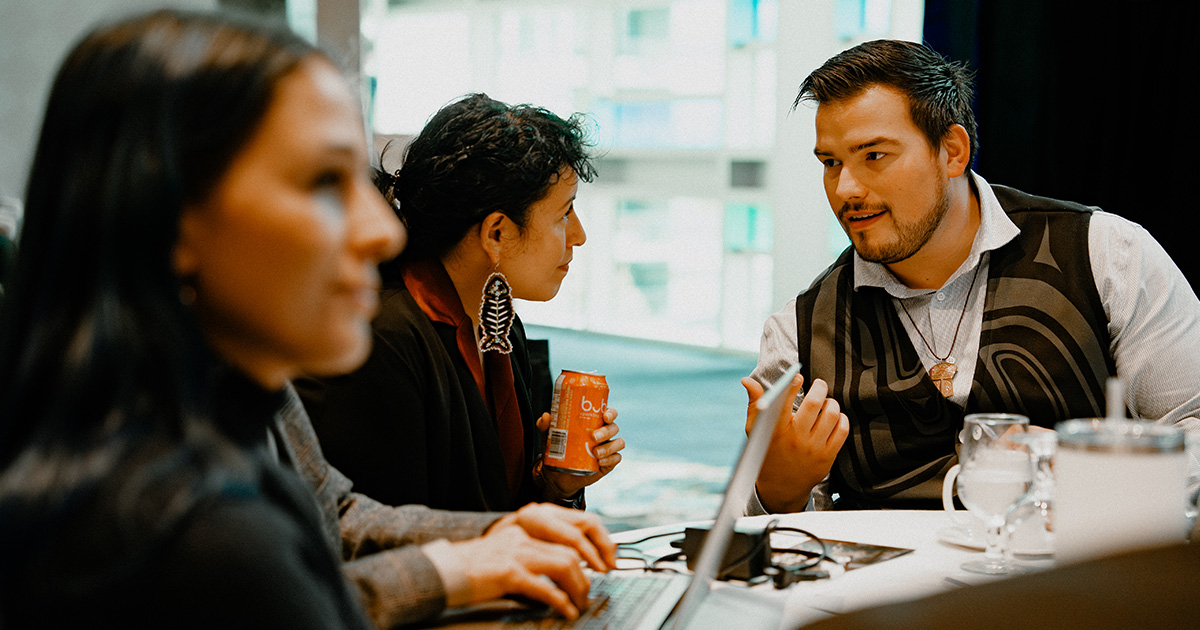
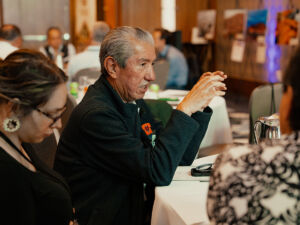
In October, First Nations leaders – including Hereditary and elected Chiefs, business leaders, and representatives from Nation’ economic development corporations – gathered in Vancouver for the Great Bear Rainforest Economic Summit, a conference marking more than 15 years of collective investment in sustainable businesses, infrastructure, and economic development on the coast.
Participating First Nations have been working together since before the signing of the Great Bear Rainforest Agreements (2006), which protected sensitive forests in their territories. As an outcome of the Agreements, First Nations secured $60 million for an Economic Development Fund, administered through Coast Funds, that has delivered over $61.4 million (2008 to 2024) for Nations’ economic priorities.
Throughout the day, First Nation leaders reflected on how their projects have sparked positive change in their communities, by creating new jobs, generating revenue, strengthening partnerships, and creating new opportunities in sectors like eco-cultural tourism and sustainable fisheries.
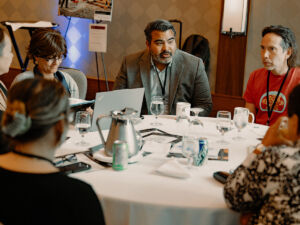
On a morning panel, representatives from Haida Enterprise Corporation (HaiCo), Gitga’at Development Corporation, and K’awat’si Economic Development Corporation (owned by Gwa’sala-‘Nakwaxda’xw Nations) shared their experiences with forming development corporations and selecting projects and industries to invest in.
“What the [economic development] funds have done is give us the idea that there’s these opportunities out there. It was very exciting and it gave me a lot of hope for our future,” said Chief Darren Blaney, from Homalco First Nation, which has invested in cultural tourism and stewardship. “I think there’s a lot of opportunities for us to look at other areas of business that will help us to keep growing.”
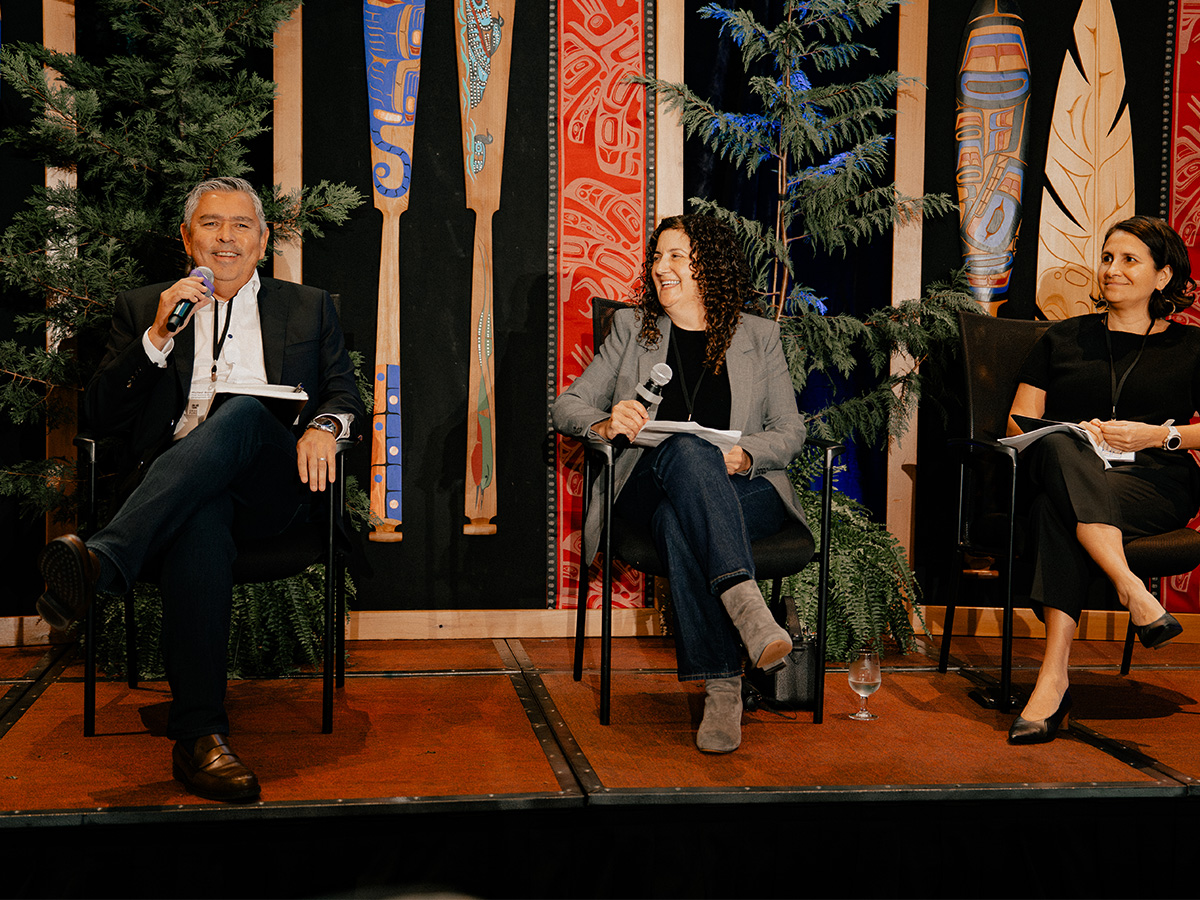
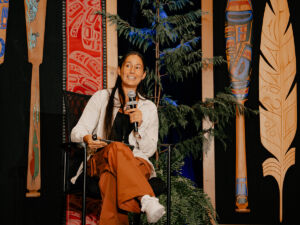
“On the coast, First Nations have demonstrated how economic development can be grounded in cultural values and traditional governance and stewardship practices,” said Patricia Sayer, Director of Economic Development at Coast Funds. “Over the last 17 years, First Nations have built a strong foundation for a conservation economy. At the Economic Summit, we’re reflecting on that progress, and hearing from a new generation of leaders who are ready to build on that success.”
Delegates also heard from economists and researchers from CPA BC, UBC Faculty of Forestry, First Nations Business Development Association, Export Development Canada, and VLW Financial Management on the trends shaping the broader economy in BC and Canada: trade uncertainties, technological change, and a renewed focus on homegrown strengths.
On the coast, First Nations have demonstrated how economic development can be grounded in cultural values and traditional governance and stewardship practices.
Well-Being Outcomes: Economic Development Fund
At the gathering, First Nations leaders took stock of the projects and businesses their communities have invested in – from commercial property in Prince Rupert to ecotourism ventures in Klemtu and Port Hardy to value-added forestry on Haida Gwaii – and the collective outcomes they’re achieved in the Great Bear Rainforest and Haida Gwaii.
Through their projects, First Nations have:
- Supported more than 1,000 new jobs in coastal communities
- Acquired or launched more than 120 businesses
- Attracted $207 million of additional investment to the region, a three-fold return on initial capital
- Helped more than 100 community members to attend college and university programs
- Established seven economic development corporations
Setting the Table for the Next Generation
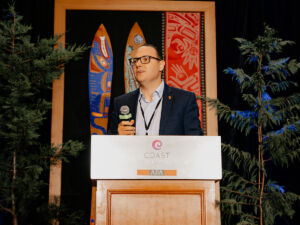
“The Great Bear Rainforest Economic Summit was an insightful day,” said Eddy Adra, CEO of Coast Funds. “We heard from leaders on the impact of their projects, from economists on First Nations’ collective impact on GDP and employment, and explored different perspectives on ‘stewardship economics.’ I was also humbled to hear from Chief Leanne Joe and Elder Shane Pointe on what ‘wealth’ really means for the Nations we serve.”
“It’s brought together many people, diverse perspectives, and expert perspectives,” agreed Shane Harsch, a Haida citizen and board member at HaiCo, which has invested in tourism, forestry, and other sustainable projects.
Beyond presentations and panels, Summit delegates had opportunities to learn from one another, strengthen relationships, and collaborate on their visions for the next phase of economic development on the coast.
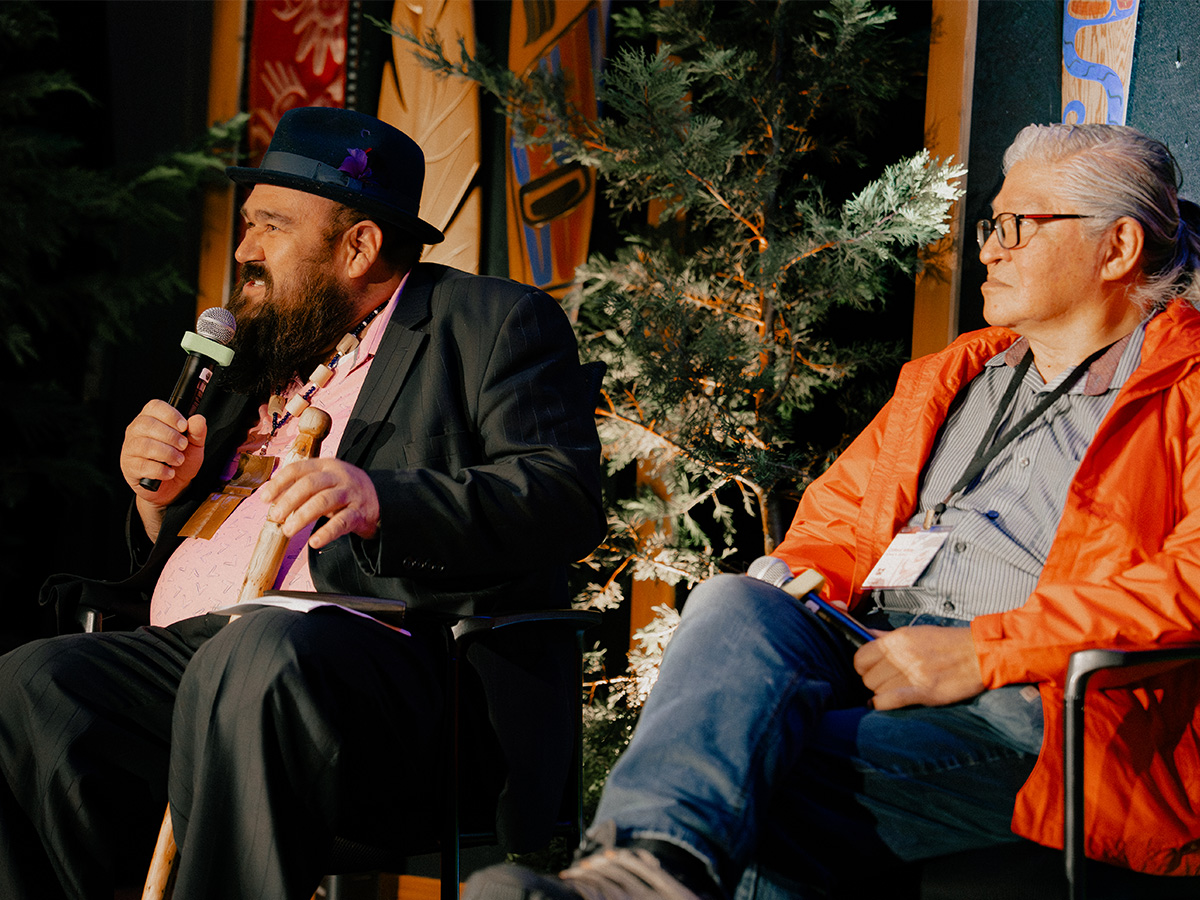
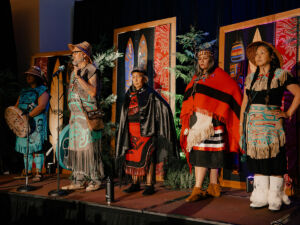
“I think the future is going to be so bright and, economically, we are setting the table for [the next generation],” said Chief Councillor Samuel Schooner, Nuxalk Nation. “And with the help of Coast Funds, that makes it that much better. You know, we can be as creative as we want to be, not restricted to [conventional] funding standards where it’s created in an office in Ottawa.”
After the Summit, Coast Funds’ partners, funders, and board members joined First Nations leaders for a Celebration Dinner featuring a ‘fireside’ chat between Dallas Smith (Tlowitsis), Chief Darren Blaney (Homalco), and Hereditary Chief Nees Ma’Outa Clifford White (Gitxaała) on the legacy of the Great Bear Rainforest Agreements and how relations between First Nations, Crown governments, and funding partners have evolved in recent decades.
As a highlight of the Dinner, the Git Hayetsk Dancers – who have family ties to the Haida, Nisga’a, Tlingit, Tsimshian, Haisla, and Tsetsaut Nations – shared mask dances and songs passed down through their families, grounding guests in cultural tradition and lending strength for the work to come.
Thank You to Our Sponsors
The Great Bear Rainforest Economic Summit, Celebration Dinner, and travel costs were generously supported by Coast Funds’ investment partners: Axium Infrastructure, Fiera Capital, and ACM Advisors.
For a full list of speakers, download the Great Bear Rainforest Economic Summit program.



